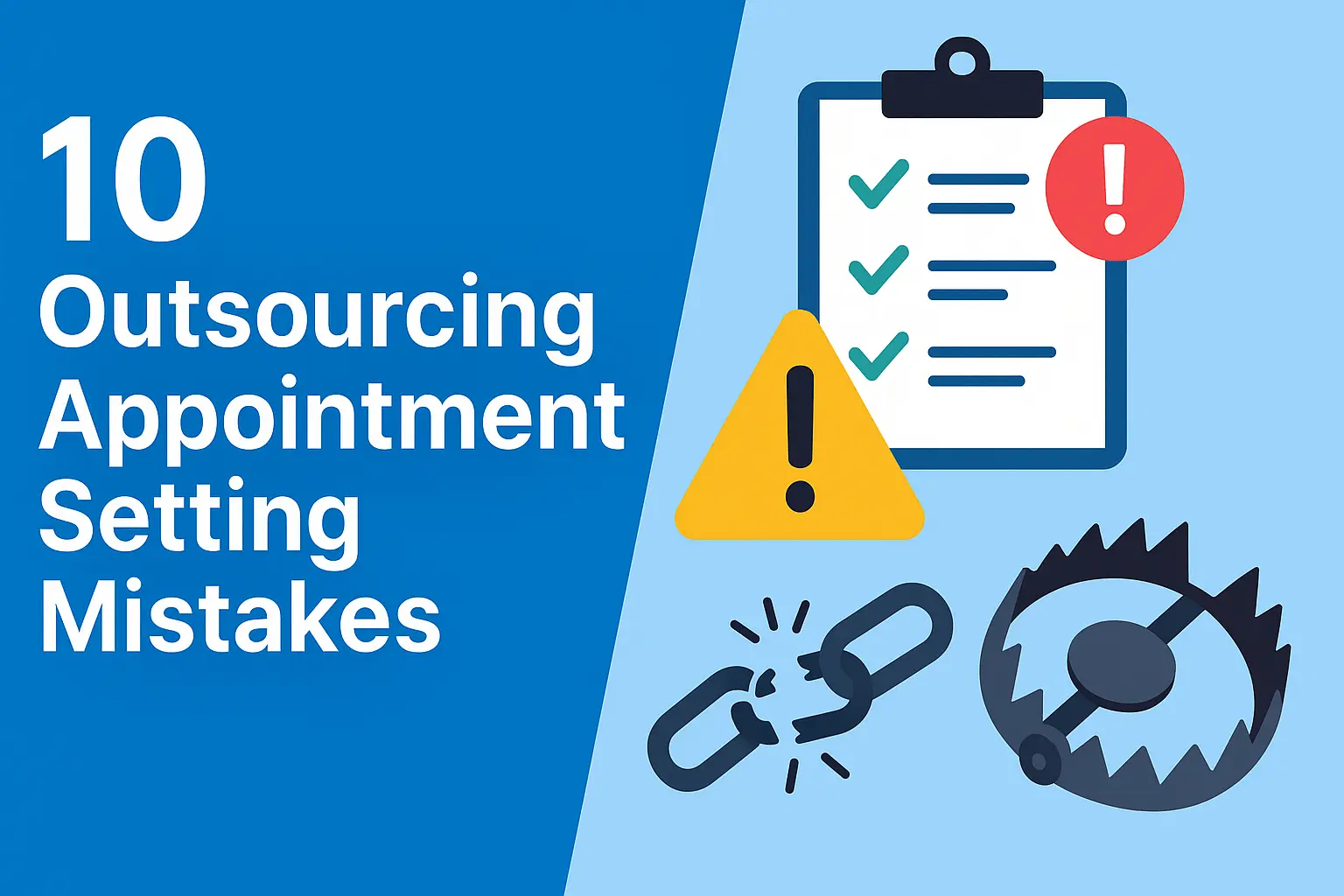Outsourcing appointment setting can double a sales team’s reach without doubling payroll. Yet many firms jump in, trip over the same traps, and swear the model “doesn’t work.” These missteps are easy to spot—and easier to dodge—once you know where they hide.
1. Chasing the Lowest Price
A bargain that undercuts every other quote often masks hidden costs: untrained callers, recycled data lists, or seat-sharing across clients. Cheap hourly rates turn out expensive when you count missed meetings, no-shows, and damaged brand trust. Focus on cost per qualified meeting, not cost per hour.
2. Skipping the ICP Homework
A provider cannot book the right meetings if you have not nailed down your ideal customer profile (ICP). Hand over firmographic filters, pain points, and real buyer stories before the first dial. Vague briefs like “mid-market SaaS” produce vague results—usually a packed calendar with unfit prospects.
3. Setting Vague Success Metrics
“Book meetings” is not a metric. Define:
- Qualified meetings per month (e.g., 20 demos with VP-level decision-makers).
- Show rate (target 80 %).
- Pipeline value sourced (forecast dollars tied to meetings).
Clear numbers steer daily activity and erase disputes later.
4. Treating Communication as One-Way
Some teams fire over scripts and disappear until month-end. Appointment setters need quick answers on objections, new features, and pricing changes. Schedule short weekly syncs, share enablement decks, and keep a live FAQ that callers can update in real time. Dialogue turns into better calls; silence breeds guesswork.
5. Ignoring Data Security and Compliance
Prospects expect privacy. Regulators agree. Ask every vendor:
- How do you store prospect data?
- Do you follow GDPR, CCPA, CAN-SPAM, and any industry-specific rules?
- Where is data physically hosted?
A data breach or non-compliant email blast can wipe out more revenue than any meeting will bring in.
6. Overlooking Cultural Alignment and Time Zones
Global talent is a plus only if schedules align with buyer habits. If callers reach your U.S. leads at 2 a.m. local time, energy and empathy fade fast. Confirm planned calling blocks, language fluency, and holiday calendars. Cultural missteps—like pushing a hard close on the first touch—kill rapport before it starts.
7. Rushing—or Skipping—Onboarding
Outsourced teams still need product knowledge. Share demo videos, persona pain charts, competitive landscapes, and sample discovery questions. Some companies cut onboarding short to “save time,” then spend weeks fixing sloppy pitches. Invest one solid week up front; get cleaner calls for months.
8. “Set It and Forget It” Management
Appointment setting is not a crock-pot. Review call recordings, inspect email threads, and adjust talk tracks every few days, especially in the first month. Fast feedback loops turn average scripts into high-yield conversations. Without that loop, scripts stagnate, and meetings plateau.
9. Failing to Integrate Tech Stacks
If the provider logs activity in a siloed CRM or spreadsheet, reps back home fly blind. Require direct entry into your Salesforce, HubSpot, or Pipedrive instance (even with role-based permissions). Shared dashboards keep everyone honest and shorten hand-offs from booked meeting to closed deal.
10. Pulling the Plug Too Early
Outbound programs need time to iterate. A common benchmark: first meetings in weeks 2-4, pipeline covering fees by month 3. Halting at week six because “the magic isn’t there” wastes the learning curve you just funded. Set a 90-day test window, measure against the metrics in #3, and decide with data, not frustration.
Key Takeaways
- Cheap rates invite hidden losses. Track cost per qualified meeting instead.
- Detailed ICP + clear KPIs = focused outreach. Skip either, expect noise.
- Active collaboration beats hands-off outsourcing. Weekly feedback refines results.
- Security and tech fit matter as much as calling skill. Protect data and pipeline alike.
- Commit to a full test cycle. Give the process room to mature before judging success.
Outsourcing appointment setting isn’t a gamble—it’s a managed project. Define the target, share knowledge freely, inspect the work often, and hold the partner to numbers that drive revenue, not vanity. Do that, and the only surprise will be how quickly open calendars fill with the right prospects.
